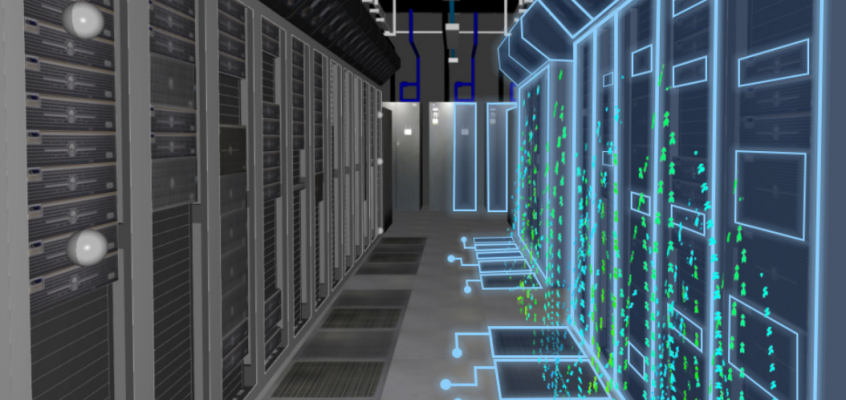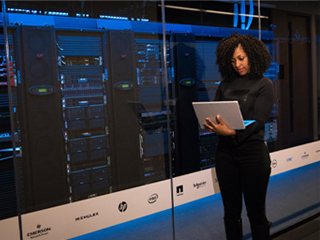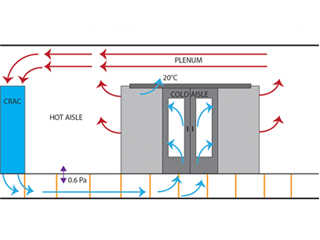What Is A Digital Twin?
A virtual representation of a procedure, good, or service is called a digital twin. By combining the virtual and physical worlds, data analysis and system monitoring can prevent downtime, find new opportunities, and even plan by simulating situations in advance.
How Does Digital Twin Work?
A digital twin can be thought of as a link between the physical and digital worlds. Smart components employ sensors to collect data on their current operational status, working environments and operating capacity. This data is acquired by the digital twin, which then simulates the operating conditions in real-time.
Cabinet Inlet Temperature Report
The maximum reading from each temperature sensor at the front of the cabinet is shown in the max temperature per cabinet fronts floor map report.
Why Are Digital Twins Useful?
Digital twins are potent forces that propel performance and innovation for efficient management and planning. Think of it as the most skilled product technician you have, equipped with the most cutting-edge monitoring, analytical, and predictive tools.
Why Use A Digital Twin For Your Data Centre?
Data centers are strong nodes designed to maintain the seamless operation of the digital world. They are more and more necessary to businesses and beyond. Worldwide competition amongst data centers is also growing at the same time. There is a lot of pressure to offer high efficiency given the ongoing increase in demand for various services.
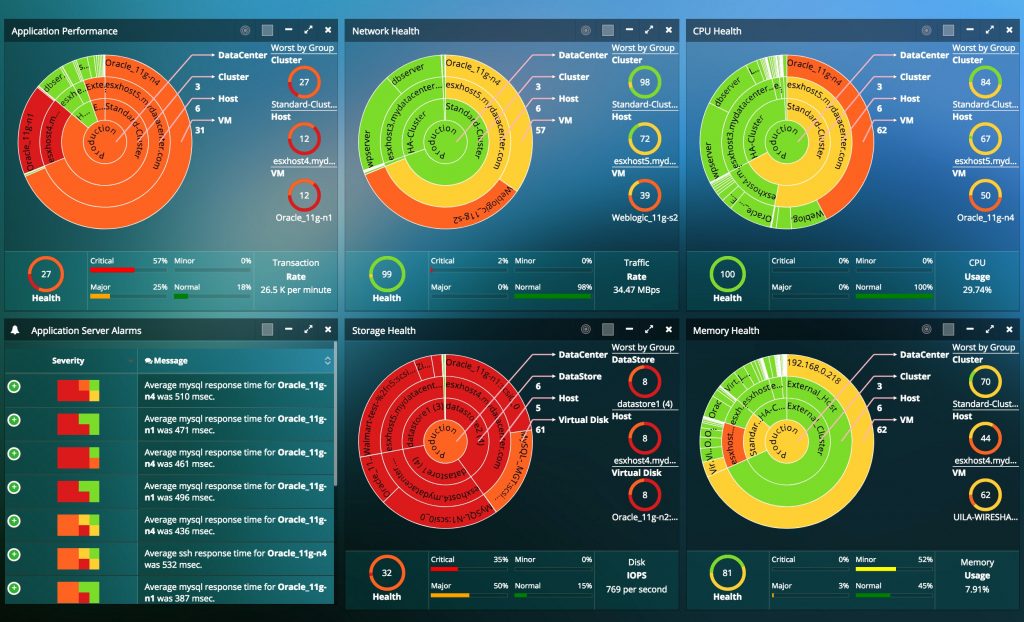
Photo Credit: www.uila.com
Power Dashboard
The Actual and Planned Power vs. Capacity/Cabinet, Actual Active Power by Location, and Budget Power Capacity are just a few of the indicators that may be monitored in this sample.
Data centers are also continuously getting more complicated. Managing operations presents a significant difficulty when performance density rises. To get beyond these obstacles, data center operations must adopt new strategies. Introducing the data center of today’s digital twin.
Simulation Enablement
For simulation purposes, digital twins are frequently made. For instance, while organizing the production of a certain product. The digital twin has a map of every stage in the process, allowing for virtual testing and optimization. The digital twin will act exactly like its genuine counterpart if it is continuously “fed” real facts. The digital twin can result in enhancements across the course of a data center’s entire life cycle when this method is used.
Data Center Digital Operations In The Future
The increased complexity of contemporary data center environments can be managed by IT teams with the aid of the digital twin combined with artificial intelligence. Even while data centers are the vital performance hubs that power the digital world, maintaining operations still necessitates a substantial amount of manual labor and in-depth specialized knowledge.
Emergency response plans, for instance, are occasionally only printed on paper. In other cases, knowledge is limited to a small group of experts who must “use their heads” since essential information has not been shared or archived. The smooth flow of information cannot be ensured if consistent interfaces have not been introduced across departments, and traditional monitoring systems are frequently overloaded with alarms that make troubleshooting challenging owing to a lack of clarity. All of this leads to ineffective efficiency, or worse, especially when snap choices are required.
Even everyday operations can be affected. It frequently takes too long to determine whether a platform can be quickly given with enough resources. A digital twin, which depicts the current state of the data center, can be useful in this case. But it only serves as one example of the need for a digital twin in today’s cutting-edge data centers.
With this strategy, risk reduction and energy management can both be optimized. About half of the expenses associated with running a data center are related to energy. And these costs are going up.
Digital Twin For Better And Faster Decisions
The digital twin is real and constantly communicates with the physical data center. It does this by receiving data from sensors, common interfaces, and protocols. The digital twin serves as the “intelligent friend” of the actual data center; no new system software needs to be installed.
Multiple Floor Map Reports
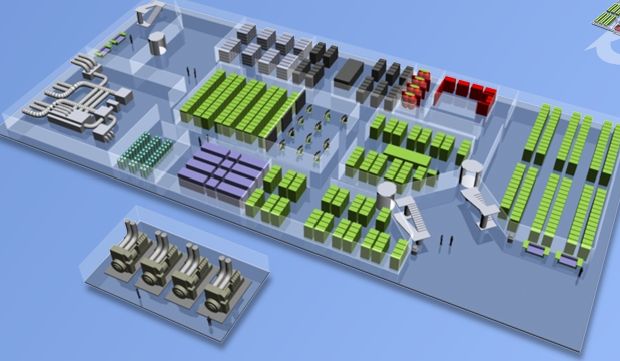
Photo Credit: Pinterest
You may overlay several data center capacity, environmental, and power statistics using 3D floor map visualizations to correlate data.
For instance, it shows how the temperature changes across the data center. It is considerably simpler to optimize cooling in the data center and distribute equipment properly to increase energy efficiency when hot areas can be quickly identified.
When it comes to data center operations, process automation also offers significant room for optimization. Automated emergency response to cooling system failures or IT system disruptions is a good illustration of this. Applications can be moved more quickly and without the chance of human error if these operations are automated.
These types of actions ensure operations are reliable, trouble-free, and compliant with applicable regulations while reducing employee workloads and operating expenses significantly.
Sourcing A Digital Twin For Your Data Centers
Your Data Center Digital Twin, including your distant and branch offices, for telcos, this includes all equipment at cell tower locations, is provided by a DCIM software. Additionally, it offers an online interface through which you can observe and manage operations at all of your sites.
As the digital twin of your data center, AKCP Server offers a wide range of features and capabilities that may be used to manage data center operations and facilities more effectively as well as enhance infrastructure and facility planning and design. Excel, Visio, and custom databases are frequently replaced by it. To make the most of the Data Center, AKCP Server may connect information from many organizational domains, including Data Center Ops, Facilities, and IT equipment status.
AKCP Thermal Mapping Solutions
Data Center operations managers can swiftly provide new equipment, confidently estimate capacity for future development, and identify, locate, visualize, and manage all physical Data Center assets with DCIM software. AKCP Server also aids in energy cost management, data center design improvement, and improved operational effectiveness. Data Center operations managers and their organizations can enjoy substantial operational and financial advantages by using an AKCP Data Centre Infrastructure Management solution, both now and in the future.
Wireless Thermal Map Sensor
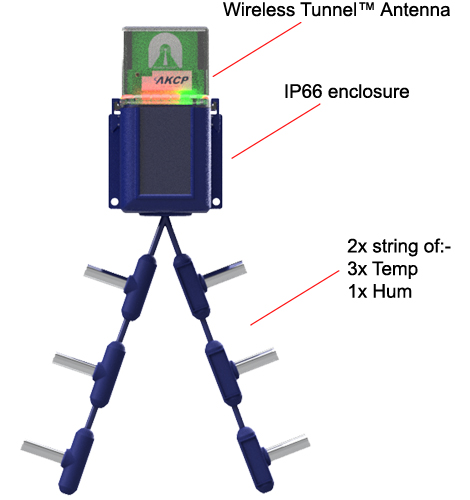
Wireless Thermal Maps
Keep an eye on the temperature difference between your cabinet’s front and back. By identifying regions where the temperature differential between the front and rear is too great, data center monitoring with wireless thermal map sensors enables you to locate and reduce hotspots in your cabinets.
It monitors airflow intake and exhaust temperatures and provides the temperature difference between the front and rear of the cabinet by using three temperature sensors up front and three at the back. Wireless Thermal Maps are compatible with all Wireless Gateways.
Thermal Map Sensors
Sensors installed in the space or on specific cabinets have historically been used in data centers to keep an eye on the temperature and humidity levels there. For more than 30 years, AKCP has been the top global provider of SNMP-based environmental monitoring systems for the data center. The Thermal Map Sensor, a 3-in-1 sensor that will track the temperature and humidity at the top, middle, and bottom of your server cabinet, is a recent innovation from us. designed to be installed at the rack’s front air inlet, with a second sensor being installed at the back air exit.
Why do this? What is the benefit of using two sensors instead of one in the rack? Why measure the temperature of the incoming and ejected air?
Thermal Maps For Cost Savings
Thermal map sensors can play a role in reducing your data center PUE. They allow you to more precisely monitor, and thus control your cooling and server temperatures. You can identify areas that are being under or overcooled, and adjust your cooling, turn off fans to specific areas that are not needed, re-balance your server loads if you find some are more overworked than others. Temperature sensors in a data center don’t simply need to be there to alert you to a critical situation, they can be used as an integral part of your data center PUE management.
Reference Links:
https://www.futurefacilities.com/the-data-center-digital-twin/
https://blog.triparagon.com/digital-twins-for-data-centres

